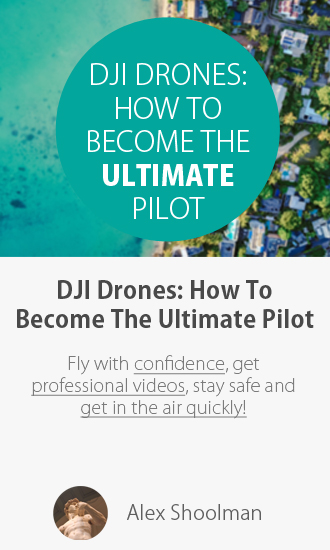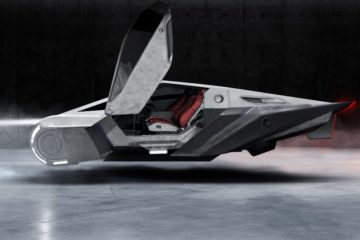A few days ago DJI took the wraps off their latest drone, the DJI Mavic Air.
Coming in at about the size of a smartphone (Pixel 2 XL, Galaxy S8+ etc) it packs quite the punch. You could quite easily slip it into a jacket pocket (with the remote controller slipped into the other pocket) and be on your way.
Table of Contents
Specs!
Running down the specs it’s very similar to its Mavic Pro cousin:
| Mavic Air | Mavic Mini | Mavic Air 2 | |
|---|---|---|---|
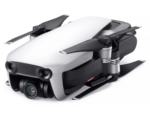 | 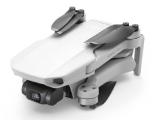 | 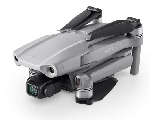 | |
| Released: | January 2018 | Oct 2019 | Apr 2020 |
| Price: | $799 USD $1,149 AUD | $399 USD $599 AUD | $799 USD $1,499 AUD |
| Weight: | 430 g / 0.95 lbs | 249 g / 0.55 lb | 570 g / 1.3 lb |
| Size Unfolded (L×W×H): | 168×184×64 mm | 245×290×55 mm | 183×253×77 mm |
| Size Folded (L×W×H): | 168×83×49 mm | 140×82×57 mm | 180×97×84 mm |
| Flight Time: | 21 minutes | 30 minutes | 34 Minutes |
| Remote Controller Range: | 4 km / 2.5 miles | 4 km / 2.5 miles | 10 km / 6.2 miles |
| Top Speed: | 68 kph / 43 mph | 13 m/s 47 kph / 29 mph | 68.4 kph / 42.75 mph |
| Obstacle Avoidance: | Front/Rear + Down | Down | Front/Rear + Down |
| Camera Sensor: | 1/2.3'' CMOS 12 MP | 1/2.3'' CMOS 12 MP | 1/2.3' CMOS 12 MP & 48 MP |
| Camera Lens: | 28 mm, f/2.8 | 35 mm, f/2.8 | 24 mm, f/2.8 |
| Max Recording Info: | 4K @ 30 FPS 10-bit 100 Mbps | 2.7K @ 30 FPS 8-bit 40 Mbps | 4K @ 60 FPS 8-bit 120 Mbps |
| Gimbal: | 3-Axis (tilt, roll, pan) | 3-Axis (tilt, roll, pan) | 3-Axis (tilt, roll, pan) |
| Internal Storage: | 8GB | None | 8GB |
| Intelligent Flight Modes: | ActiveTrack QuickShot SmartCapture TapFly Tripod Mode Cinematic Mode Point of Interest | QuickShot - Dronie - Circle - Helix - Rocket | 8K Hyperlapse - Free - Circle - Course Lock - Waypoint QuickShot - Dronie - Circle - Helix - Rocket - Boomerang - Asteroid Spotlight 2.0 ActiveTrack 3.0 Point of Interest 3.0 Waypoints TapFly Cinematic Mode |
| Last updated: 29th April, 2020. Please also note that while we try our best, there may be some errors or some points that are not 100% up to date. | |||
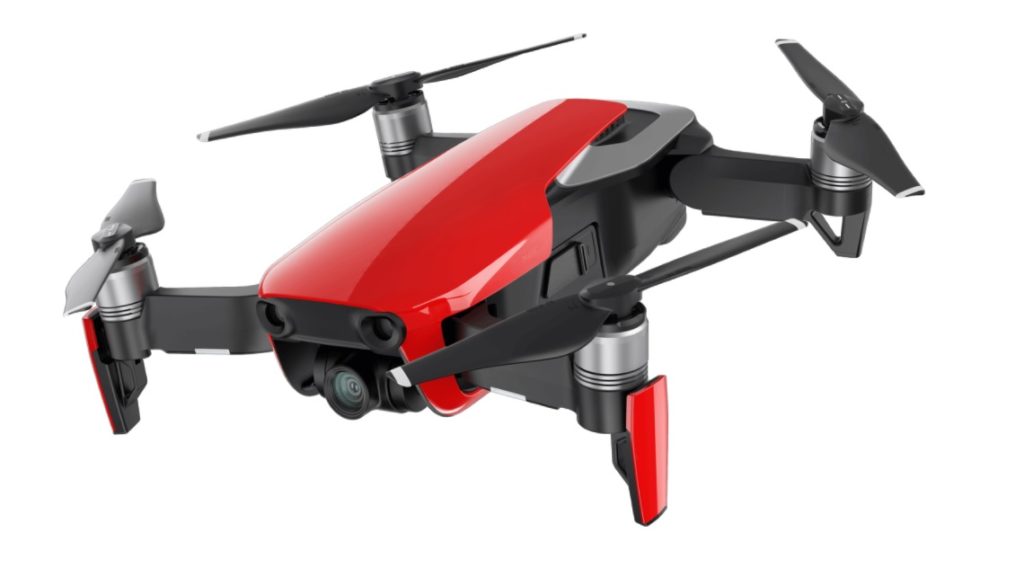
Source: DJI
It even comes in “Flame Red” now to… you know… make it go faster. Hilariously, it does actually go faster than the original Mavic Pro! (68.4 km/h vs 65 km/h)
A New, Refined Design
Talking about the new drone DJI admitted that inspiration for the design had come from both the Mavic Pro and the Spark. They obviously wanted to combine the power and the abilities of the Mavic Pro (which is a fantastic drone!) together with the size, extreme portability and also lower price point of the Spark.
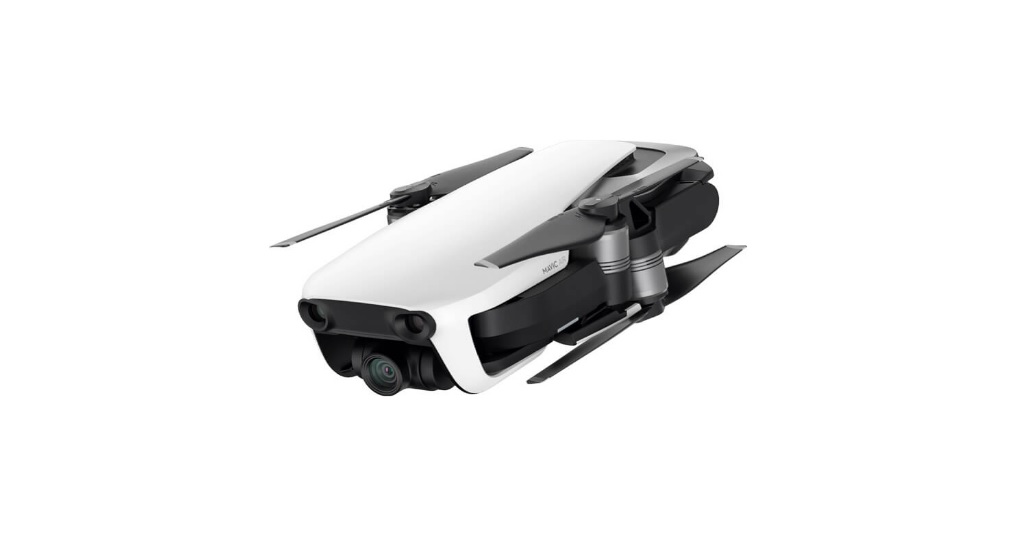
Comes in White, Black, Red plus folds up super tight ala the Mavic Pro. Source: DJI
While the Mavic Air isn’t considerably smaller than the Mavic Pro at least in width and length measurements, it is almost half the height. Together with the few centimetres they’ve shaved off the width and length the overall size of the drone is essentially half.
With the Mavic Pro coming in at 734 g versus the Mavic Air at 430 g it’s basically half the weight too. Considering they’ve managed to not only keep most of the fantastic features of the Mavic Pro (4K camera, 3-axis stabilisation, decent flight time) as well as add new features and hardware it’s looking like another knock out of the park product for DJI.
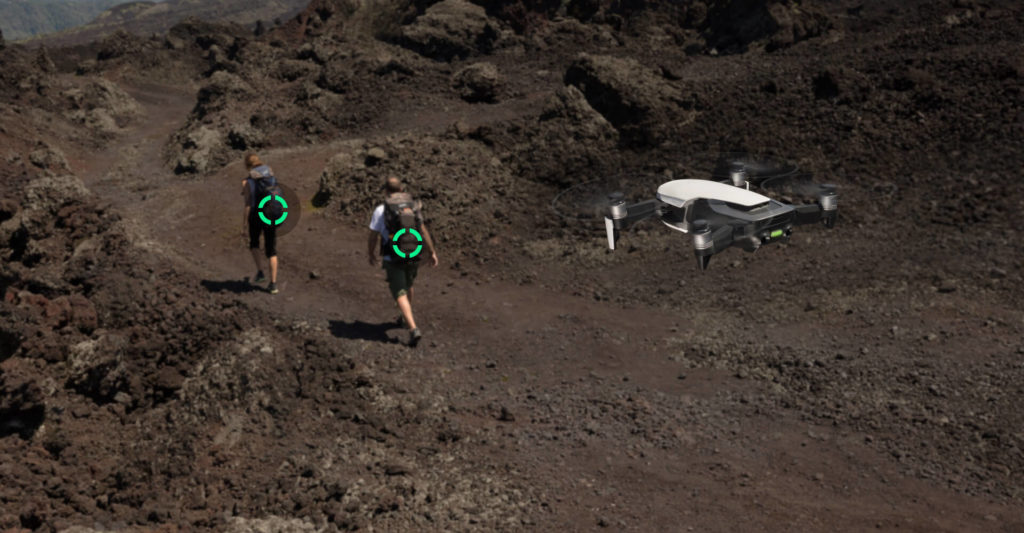
Source: DJI
ActiveTrack mode has now been upgraded to be able to track multiple subjects. There’s new QuickShot modes called Asteroid and Boomerang, better Gesture support and even an entirely new object avoidance system.
Price Drop
On top of all this, DJI have cut the price too. The Mavic Pro is $999 USD while the Mavic Air is $799 USD. You even get the new remote controller included in that price. With removable sticks that store inside the controller it’s not a bad deal.
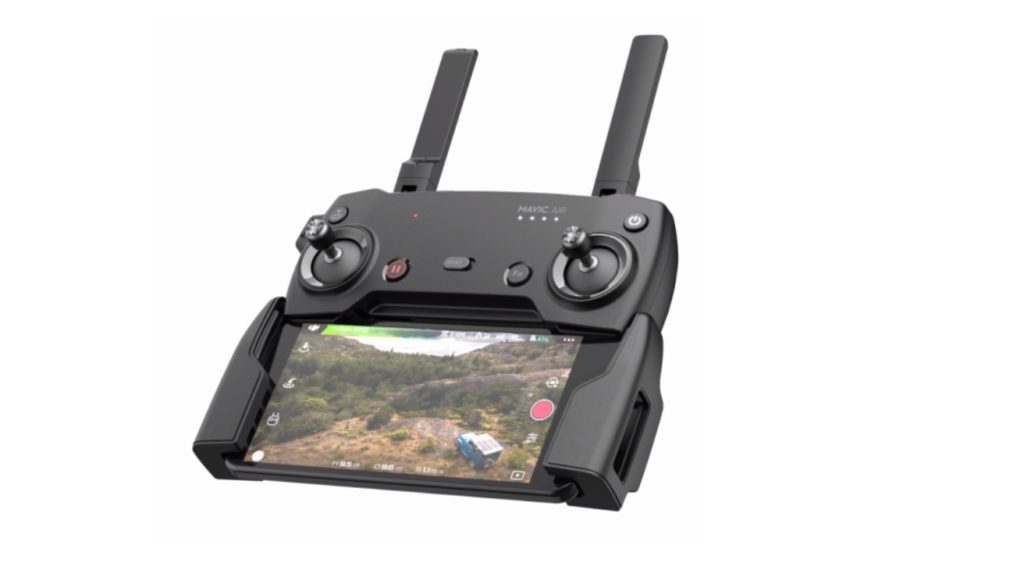
Source: DJI
Given its weight, size, capabilities and price things are getting pretty ridiculous now in the world of drones. Just have a think about those specs. For $799 USD you can own your own 4K camera that can fly at almost 70 km/h up to 4 km’s away and do so entirely autonomously if you want it to.
You could literally pull it out of your pocket and get these types of amazing shots in about 5 minutes.
And I hope the tech only gets better too.
Safer Flying
DJI have also addressed a less sexy, but still very important point which is component redundancies. As these are consumer facing products, they often don’t have redundant systems like more serious flying objects do such as two or four engine planes.
As a result, if your IMU or position sensors failed your drone could easily fall like a brick out of the sky. Now with the Mavic Air, DJI are adding things like dual IMU’s, software to compensate in the event of compass interference or failure. Backup sensor fusion algorithms based off two independent hardware components.
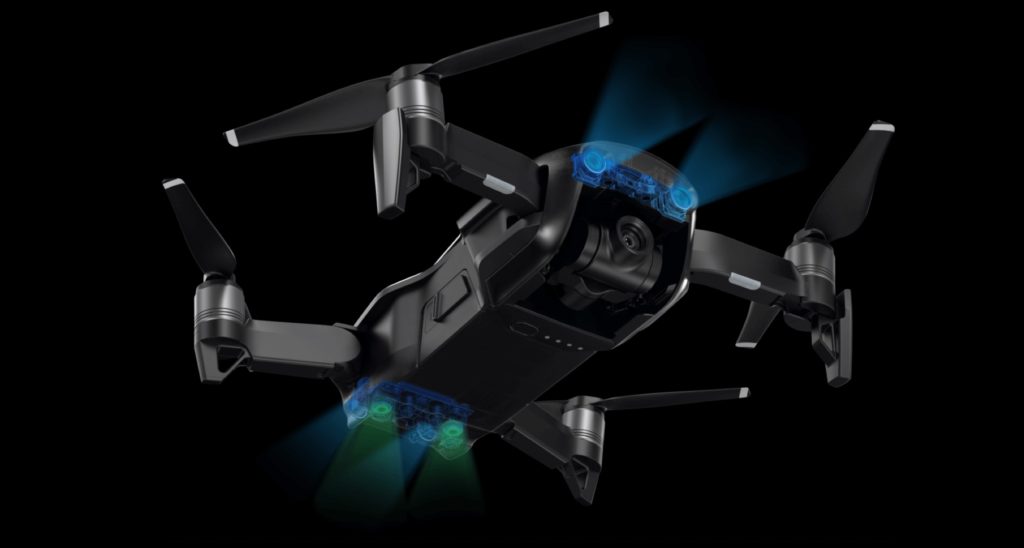
Source: DJI
While there are still major components that can fail and cause a drone to crash (eg. your battery) it’s encouraging to see DJI take on these issues in even their cheaper drones.
It’s because of these highly single point of failure hardware drones – and reckless pilots – that many countries have imposed very strict rules and regulations. If more companies and pilots start flying with fully redundant hardware drones it should hopefully reduce the rate of serious accidents and make regulators a little bit more at ease.
That being said no amount of redundant systems will stop some idiots flying into airports! Then again, that’s what software and NFZ’s are for!
So are you going to get one of them? Owning the Mavic Pro I’d highly recommend DJI’s products but understand even at $799 USD they’re not exactly cheap! Let us know in the comments below!
The benefits include: 1) How to get those silky smooth videos that everyone loves to watch, even if you're new 2) How to fly your drone, from taking off to the most advanced flight modes 3) Clear outlines of how to fly with step-by-step instructional demonstrations and more 4) Why flying indoors often results in new pilots crashing their drone 5) What other great 3rd party apps are out there to get the most out of your drone 6) A huge mistake many pilots make when storing their drone in the car and how to avoid it 7) How to do all of these things whilst flying safely and within your countries laws.
